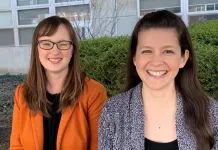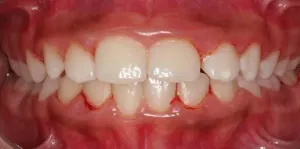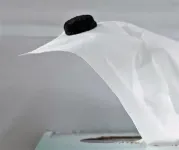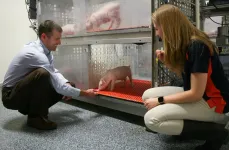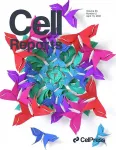This time, though, Kuris served as a seasoned mentor for several young researchers who hadn't even been born when he first visited the site. Truth be told, many of their parents hadn't yet been born.
This was just one of many shorelines along the coast of the Pacific Northwest where the group was repeating ecological field work Kuris conducted in 1969 and 70. He teamed up with Assistant Professor Chelsea Wood of the University of Washington and her lab -- all parasite ecologists eager to know the fate of the organisms Kuris had studied so long ago.
Wood is interested in the historical ecology of parasitism -- that is, in understanding how the abundance of parasites has ebbed and flowed through time. Over coffee with Kuris during a break from a workshop at UC Santa Barbara, Wood lamented the dearth of quality historical datasets.
"Armand said, 'well, surely you know I've got notebooks full of data on shore crab parasites from the late '60s?'" Wood recalled, "and my jaw dropped."
"You see, a lot of times older studies have a narrow focus, or it's really hard to access the data in detail, as opposed to a summary," explained Kuris. But with reams of notes, and the benefit of access to the man who took them, it was possible to repeat the old experiments to a T.
"And from that moment we were set on it," Wood said.
Results from the new survey, led by undergraduate students, appear in the Proceedings of the Royal Society B, and reveal that the abundance of parasites among shore crabs hasn't followed a simple trajectory over the last half-century.
"There's a widespread perception that humans are messing with ecosystems, and only bad things can come of that," Wood said. "Folks assume that means we're going to see an explosion in infectious disease into the future. But our data suggest there are other trajectories that parasites can take."
A whirlwind adventure
The year is 1969, and a young Armand Kuris is finishing up his graduate studies at UC Berkeley. He is polishing his thesis on the green shore crab and its parasites -- particularly the isopod Portunion conformis -- with considerable data from Bodega Harbor and San Francisco Bay.
But a study at Tacoma Narrows, Washington grabs his attention. The author claimed that 100% of these crabs carried eggs in winter. To Kuris, this meant that none of them could be infected with the isopod, which castrates its hosts. If true, this absence of parasites would have been quite surprising. He had to find out for himself.
Kuris contacted various labs along the western seaboard and arranged an ambitious field expedition for May of that year. In the span of one month, he and two friends drove from the start of the coastal road at Bahia San Quintín, five hours south of the U.S.-Mexico border, to Ucluelet on the outer coast of Vancouver Island, Canada, where the pavement finally ended.
"The aim was to start as far south as the graded road began in Mexico and stop as far north as it ended up," Kuris recalled. All along the way, he and his comrades collected crabs and analyzed their anatomy and parasites.
The trip was extensively planned. "I knew what I was going to be doing plus-or-minus 1 hour for all 30 days," he said.
As a bright-eyed young scientist, Kuris felt his work was the pinnacle of human investigation. Imbued with this sense of consequence, the budding researcher made sure his work was perfect. He kept meticulous notes and took pains to ensure his methodology was consistent at every site. He wasted no materials, identified and quantified all the parasites he found, and recorded his observations in comprehensive data sheets.
Then, the following winter, he did the whole thing again, just for completeness.
Kuris' diligence proved crucial five decades on. "If that spirit of perfectionism hadn't taken hold, the dataset would not have been useful in the way that it was 50 years later," said Wood.
Incidentally, that researcher who studied the crabs of Tacoma Narrows was nearly correct. According to Kuris, 98% of the local crabs were parasite-free, just shy of the 100% figure the other scientist had claimed.
Parasite ecology
Kuris' approach to parasitology in '69 and '70 was relatively unusual. The field had arisen from medical sciences, not ecology, and so an ecological perspective was uncommon among his colleagues at the time. "Parasites are invisible," he said. "And if you don't see it, you don't think about it." A notable exception to this was UC Santa Barbara's own Elmer Noble, namesake of Noble Hall, Kuris noted.
What's more, parasitology is not incorporated into standard biology curricula, Wood pointed out. It certainly isn't present in K-12 curricula, and students can earn a bachelor's degree in ecology without ever learning about these organisms. "Parasites are just not something that's on the radar of most biologists," she said, "And while that's changing now, it has been true for the last couple of decades."
But studying parasites can reveal valuable information about an entire ecosystem, due to their often complex lifecycles. For instance, all of the parasites Kuris sampled require multiple different hosts to complete their lifecycle. So their population dynamics relate to the wellbeing of many different groups of animals and a variety of environmental conditions.
Wood had been searching for detailed historical datasets for over 10 years, and Kuris' was only the second one she'd found. There simply weren't many folks working decades ago who took thorough records of data like the number of parasites in each host and the body size of each host -- two pieces of information crucial for comparing historical and contemporary ecosystems, she explained.
"It's almost impossible to get any time depth on trajectories of parasite change for this reason," Wood said. "We have no idea how parasites have been changing for the past couple of decades. We're just flying blind."
Retracing old footsteps
Kuris' detailed records offered an unprecedented opportunity to carry out the same study and compare results after half a century of ecological change.
"And fortunately, the guy who did that first study is still alive and sentient," Kuris said, referring to himself. "He can tell you what was going on in his mind back then."
This boon was not lost on Wood. "It's one of the coolest things, to be able to have a half-century-old dataset and to have the original data collector hold the hands of the contemporary data collectors and show them exactly how it was done," she said. "I'm not aware of any other historical ecology project that's been able to achieve that level of comparability between past and present."
First author Jessica Quinn was a junior when she took over the project upon the graduation of her classmate Duncan Greeley, who had conducted the first year's worth of field collection and dissection. Kuris personally trained both of them so they could replicate exactly how and where he conducted his research so many years before.
"When we went to the shore at Neah Bay on the north coast of the Olympic Peninsula, my field notes said 'nine miles before the entrance to the Makah Indian Reservation,'" Kuris said. "Duncan and I reached that point, and I realized I was walking the same cut through the brush."
Others had obviously used the path in the intervening decades, maintaining the trail up to the present day. "That's why I went that way 50 years ago," Kuris remarked, "because there was a path."
The team hunted for shore crabs, with a special interest in the three taxa of parasites Kuris had documented in his study. There was the isopod P. conformis; larval trematodes, or flukes, in the family Microphallidae; and larval acanthocephalans, or thorny-headed worms.
The team collected hundreds of shore crabs, counting parasite loads and identifying each parasite. True to their task of repeating Kuris' work, they recorded plenty of other data as well. The scientists measured the crabs, documented their reproductive maturity, molt stage, number of missing limbs and more.
This time, though, the team limited their study to Oregon, Washington and British Columbia -- locations within striking distance of Seattle. Many sites in the south have yet to be resampled. The researchers uploaded the raw datasets, including Kuris' original work, to the internet, in the hope that another team might take up the task of completing it. Kuris and Wood stand ready to help.
Trajectories
The team studied both the prevalence of parasites -- the proportion of the host population that was infected -- and the intensity of infections, or the number of parasites per host.
As in Kuris' first study, there was considerable variation between sites. Local conditions seemed to exert a strong influence on parasite populations.
Overall, they found that populations of spiny-headed worms were virtually unchanged since the initial study. Similarly, the abundance of the isopod had remained relatively stable, despite high variability from year to year.
On the other hand, the population of trematodes exploded in abundance between the late 1960s and today. Prevalence surged from 8% to 62%, and the intensity of infections increased as well.
Although the authors aren't certain what led to the proliferation in trematode infections, Kuris and Wood suspect it reflects a rise in the number of shorebirds in the Pacific Northwest, as birds are an important host for part of the parasite's lifecycle.
Kuris remembers Tacoma Narrows as a semi-industrial wasteland when he sampled the area in 1969. Returning some 50 years later, the site was completely transformed, and a park now protects that area of the shore. Restoration and conservation efforts may have benefitted certain parasites, like the trematode, he suggested.
But it wasn't the rising number of flukes that most caught the researchers' attention. "I think the most surprising part of these results is the stasis in two of those taxa," said Wood. "So much has changed about the Pacific Northwest in the past 50 years and yet these two parasites are still trucking along the way that they were in the late '60s." The stability suggests that conditions are relatively consistent, at least the ones that matter to the lifecycles of those organisms.
It's important to understand how parasite abundance has changed over the past decades. "There's ample reason for us to be concerned about infectious disease processes these days," Wood said. "Understanding how things have changed gives us a sense of what we need to worry about and what we don't need to worry about from a wildlife disease perspective."
"Studies like this one really help contextualize contemporary disease problems in a way that's useful for management," she added.
Kuris agreed, and offered a more philosophical take on the enterprise as a whole. "The past is never dead," he said, quoting William Faulkner's novel "Requiem for a Nun." "It's not even past."
INFORMATION:
